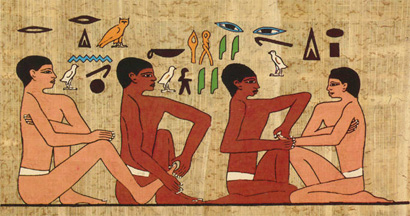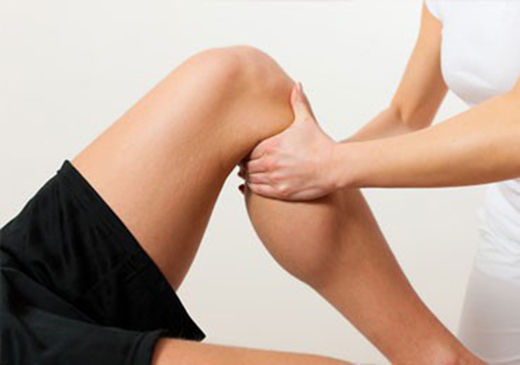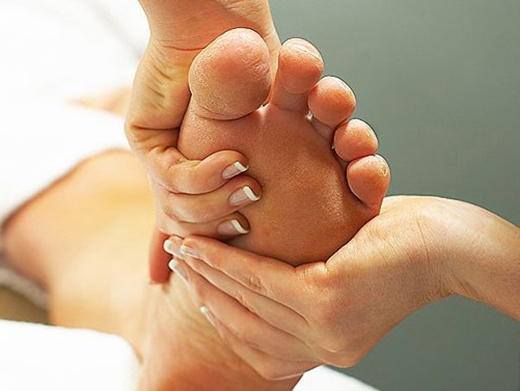Holistic Massage
what is holistic massage therapy?
 The earliest recorded incidences of massage therapy can be found in India and China dating back to 3000BC. Holistic massage therapy as we know it today was originally developed by a Swedish physician called Pehr Henrik Ling which is why holistic or therapeutic massage is also commonly referred to as Swedish massage. He is responsible for developing the classic moves we associate will modern massage therapy. Massage is the use of the hands to manipulate the muscles and soft tissues of the body in order to promote relaxation, stimulation and in certain cases rehabilitation.
The earliest recorded incidences of massage therapy can be found in India and China dating back to 3000BC. Holistic massage therapy as we know it today was originally developed by a Swedish physician called Pehr Henrik Ling which is why holistic or therapeutic massage is also commonly referred to as Swedish massage. He is responsible for developing the classic moves we associate will modern massage therapy. Massage is the use of the hands to manipulate the muscles and soft tissues of the body in order to promote relaxation, stimulation and in certain cases rehabilitation.
what are the benefits of massage?

treatment costs…
 £27 – 30 min massage treatment (45 min including consultation)
£27 – 30 min massage treatment (45 min including consultation)
 £51 – 60 min massage treatment (1hr 15 min including consultation)
£51 – 60 min massage treatment (1hr 15 min including consultation)
 £63 – 90 min massage treatment (1hr 45mins including consultation)
£63 – 90 min massage treatment (1hr 45mins including consultation)
There are many benefits of holistic massage therapy but here are some of the key points…
- Can help to reduce stress and anxiety by relaxing both body and mind resulting in a sense of well being
- Improved circulation of blood brings nutrients to the skin improving skin condition and oxygen to the cells and tissues of the body which encourages cell regeneration
- Improved elasticity of the skin
- Increased blood flow to muscles reducing fatigue and soreness, relaxation of tense muscles and relief from stiffness, spasms and restrictions in the muscle tissue
- Increased energy
- Promotes Lymph circulation and may reduce oedema (excess fluid in the tissue) by stimulating lymphatic drainage
- Boosts the immune system
- Improves respiration
- Can lower anxiety and stress, promote a sense of well being and aid restful sleep
- Increased flexibility and suppleness
- Can assist in improving balance and posture

advanced massage techniques
These techniques can be including as part of a general massage treatment depending upon individual needs and assessment during the initial consultation.
Strain/Counter strain Techniques
Counter strain is a form of manual manipulative therapy which uses an indirect means of passively positioning painful or restricted joints or muscles to relieve pain and mechanical dysfunction. The therapy aims to counter the results of the initial strain on the body. It is one of the most powerful and gentle manual techniques currently used in the field of rehabilitation. Reliable and effective, this technique can be applied to a large range of musculoskeletal dysfunctions and can be effectively used to alleviate chronic muscular spasm and related pain. Normalisation of muscle tone and spasm reduction is achieved by the placement of the client’s trunk or extremity into positions of the greatest comfort. Positions are specific to the muscle being treated and are maintained for a short period of with the aim of inhibiting the hyperactive nervous system activity producing the painful muscle spasm.
Reliable and effective, this technique can be applied to a large range of musculoskeletal dysfunctions and can be effectively used to alleviate chronic muscular spasm and related pain. Normalisation of muscle tone and spasm reduction is achieved by the placement of the client’s trunk or extremity into positions of the greatest comfort. Positions are specific to the muscle being treated and are maintained for a short period of with the aim of inhibiting the hyperactive nervous system activity producing the painful muscle spasm.
Trigger Point Therapy
Trigger points are commonly described as hyperirritable spots or knots within any soft tissue structure, most usually muscle and /or fascia. They are often tender, sometimes they radiate unexplained pain and sometimes they can trigger pain in other areas.
Trigger point therapy is a pain relief technique which aims to alleviate cramping and muscle spasms by deactivating trigger points through the use of pressure and palpation.
Soft Remedial Massage
Soft remedial massage treats soft tissue, muscle, ligaments and joints using deep specific pressure, stretching and isometrics. It aims to create the conditions for the body to return to health after injury or with muscular-skeletal disorders. It is designed to increase blood and lymph flow particularly to the site of injuries.
Soft Tissue Dysfunction and Muscle-Energy Technique
 Soft tissue techniques generally treat myofascial structures and their related neural and vascular components. Most commonly the superficial tissues (muscles and fascia) are treated; however it is equally important to treat the tendons, ligaments and even viscera. Muscle-energy technique is based on the principle of reciprocal inhibition which states that muscles on one side of a joint will always relax to accommodate contraction of the muscles on the other side upon the application of indirect pressure. This technique is often applied to clients who suffer from muscular spasms. During a treatment the client actively uses the muscle from a controlled position in a specific direction against a distinct counterforce. Neuromuscular technique is a soft tissue technique that can be particularly helpful when dealing with nodules and spasms in both deep and superficial tissues.
Soft tissue techniques generally treat myofascial structures and their related neural and vascular components. Most commonly the superficial tissues (muscles and fascia) are treated; however it is equally important to treat the tendons, ligaments and even viscera. Muscle-energy technique is based on the principle of reciprocal inhibition which states that muscles on one side of a joint will always relax to accommodate contraction of the muscles on the other side upon the application of indirect pressure. This technique is often applied to clients who suffer from muscular spasms. During a treatment the client actively uses the muscle from a controlled position in a specific direction against a distinct counterforce. Neuromuscular technique is a soft tissue technique that can be particularly helpful when dealing with nodules and spasms in both deep and superficial tissues.











